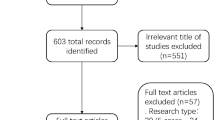Abstract
Accurate diagnostic tests have a key role in patient management and the control of most infectious diseases. Unfortunately, in many developing countries, clinical care is often critically compromised by the lack of regulatory controls on the quality of these tests. The information available on the performance of a diagnostic test can be biased or flawed because of failings in the design of the studies which assessed the performance characteristics of the test. As a result, diagnostic tests are sold and used in much of the developing world without evidence of effectiveness. Misdiagnosis leading to failure to treat a serious infection or wasting expensive treatment on people who are not infected remains a serious obstacle to health.
This is a preview of subscription content, access via your institution
Access options
Subscribe to this journal
Receive 12 print issues and online access
$209.00 per year
only $17.42 per issue
Buy this article
- Purchase on Springer Link
- Instant access to full article PDF
Prices may be subject to local taxes which are calculated during checkout




Similar content being viewed by others
References
Kent, M. M. & Yin, S. Controlling Infectious Diseases (Population Reference Bureau, Washington DC, 2006).
WHO. World Health Report [online], (2005).
WHO/UNAIDS. AIDS Epidemic Update [online], (2005).
WHO. Guidelines for the Management of Sexually Transmitted Infections [online], (2001).
WHO. Integrated Management of Childhood Illness Information Pack [online], (1998).
Mabey, D., Peeling, R.W., Ustianowski, A. & Perkins, M. Diagnostics for the developing world. Nature Rev. Microbiol. 2, 231– 240 (2004).
Cunningham, J. et al. in Diagnostics for Tuberculosis: Global Demand and Market Potential 116– 120 (WHO, in the press).
Ransohoff, D.F. & Feinstein, A. R. Problems of spectrum and bias in evaluating the efficacy of diagnostic tests. New Engl. J. Med. 299, 926– 930 (1978).
Lach, M. S. et al. Spectrum bias in the evaluation of diagnostic tests: lessons learnt from the rapid dipstick test for urinary tract infections. Ann. Intern. Med. 117, 135– 140 (1992).
Reid, M. C., Lachs, M.S. & Feinstein, A. Use of methodological standards in diagnostic test research. Getting better but still not good. J. Amer. Med. Assoc. 274, 645– 651 (1995).
Small, P. M. & Perkins, M. D. More rigour needed in trials of new diagnostic agents for tuberculosis. Lancet 356, 1048– 1049 (2000).
Pai, M. & O'Brien, R. Tuberculosis diagnostic trials: do they lack methodological rigour? Expert Rev. Mol. Diag. 6, 1– 6 (2006).
Kettler, H., White, K. & Hawkes, S. Mapping the Landscape of Diagnostics for Sexually Transmitted Infections [online], (2004).
Bachmann, L. M., Puhan, M. A., ter Riet, G. & Bossuyt, P. M. Sample size of studies on diagnostic accuracy: literature survey. Br. Med. J. 332, 1127– 1129 (2006).
Smidt, N. et al. Quality of reporting diagnostic accuracy studies. Radiology 235, 347– 353 (2005).
Irwig, L. et al. Guidelines for meta-analyses evaluating diagnostic tests. Ann. Intern. Med. 120, 667– 676 (1994).
Delaney, B. C. et al. Systematic review of near-patient test evaluations in primary care. Br. Med. J 319, 824– 827 (1999).
Bossuyt, P. M. et al. Towards complete and accurate reporting of studies of diagnostic accuracy: the STARD Initiative. Clin. Chem. 49, 1– 6 (2003).
Bossuyt, P. M. et al. The STARD statement for reporting studies of diagnostic accuracy: explanation and elaboration. Clin. Chem. 49, 7– 18 (2003).
Delaney, B. C., Wilson, S., Fitzmaurice, D., Hyde, C. & Hobbs, R. Near-patient tests in primary care:setting the standards for evaluation. J. Health Serv. Res. Policy 5, 37– 41 (2000).
Smith, P.G. & Morrow, R. H., eds Field Trials of Health Interventions in Developing Countries: A Toolbox. (Macmillan, London, 1996).
Mathers, C. D., Lopez, A. D. & Murray, C. L. in Global Burden of Disease and Risk Factors (Lopez, A. D. et al., eds) 45– 93 (Oxford Univ. Press, 2006).
Author information
Authors and Affiliations
Corresponding author
Rights and permissions
About this article
Cite this article
Peeling, R., Smith, P. & Bossuyt, P. A guide for diagnostic evaluations. Nat Rev Microbiol 4 (Suppl 12), S2–S6 (2006). https://doi.org/10.1038/nrmicro1568
Issue Date:
DOI: https://doi.org/10.1038/nrmicro1568
This article is cited by
-
Growth faltering regardless of chronic diarrhea is associated with mucosal immune dysfunction and microbial dysbiosis in the gut lumen
Mucosal Immunology (2021)
-
How are rapid diagnostic tests for infectious diseases used in clinical practice: a global survey by the International Society of Antimicrobial Chemotherapy (ISAC)
European Journal of Clinical Microbiology & Infectious Diseases (2021)
-
Norm values and psychometric properties for the German health regulatory focus scale – results of a representative survey
BMC Medical Research Methodology (2020)
-
Validation of western blot for Histoplasma capsulatum antibody detection assay
BMC Infectious Diseases (2016)
-
Large protein analysis of Staphylococcus aureus and Escherichia coli by MALDI TOF mass spectrometry using amoxicillin functionalized magnetic nanoparticles
Analytical and Bioanalytical Chemistry (2016)



